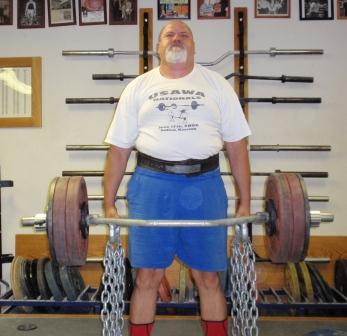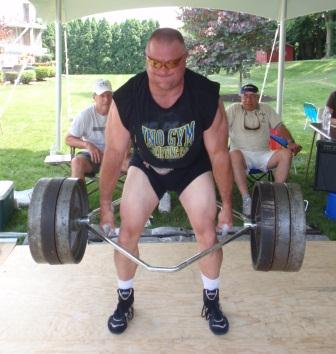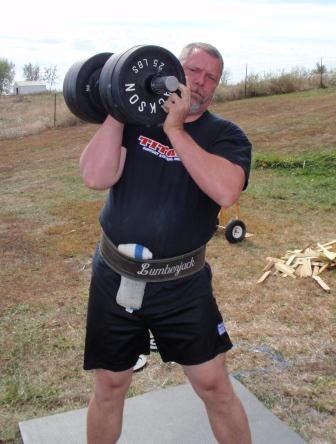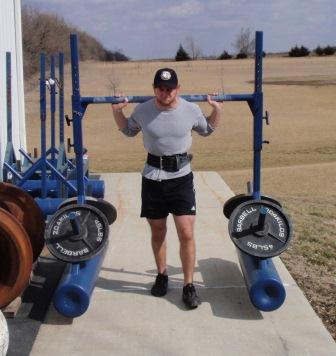One Arm Clean & Jerk
by Thom Van Vleck
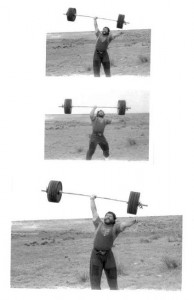
Bob Burtzloff, one of the greatest of all time on the one arm Clean & Jerk. You can tell that Bob is lifting this from a racked position, one of the two ways to complete the lift.
The USAWA National Championships have been set for Las Vegas, Nevada next June. One of the lifts that will be contest is the One Arm Clean & Jerk. This lift is a difficult lift so you can’t start working on this one too early! This lift takes a lot of balance, strength, and flexibility that not all lifters may have without some practice. Let’s take a look at the rules:
The rules of the Clean and Jerk apply with these exceptions. Only one arm is used to perform the lift. The bar is gripped in the center by one handand may be cleaned in front or cleaned to the side. Any grip may be used by the lifter. The bar must be cleaned to the same shoulder as the lifting arm in a single movement. During the clean, the bar must not touch any part of the legs or torso. In receiving the bar at the shoulder, the bar must not make contact or rest on the shoulder or chest opposite to the lifting arm. The center of the sternum is the line of lineation. The non-liftinghand may be supported on the thigh or knee of either leg but must not contact the bar, platform, or lifting arm during the lift or it will be a disqualification. With a single distinct effort the lifter will jerk the bar to arms length above the head. The non-lifting hand must be clear of the body upon completion of the lift. The bar may be in any degree of rotation when overhead. Once the bar is overhead motionless, the lifter’s body in an upright position, the feet parallel and in line with the torso, an official will give a command to lower the bar. Both hands may be used to lower the bar. The lift ends when the bar is returned to the platform under control.
So, assuming you know the basic rules of the Clean & Jerk, you are ready to do a One Arm Clean & Jerk. Now, there are two ways that I know of to complete this lift. One involves pulling the bar into a rack position and jerking it out of that rack position just like a regular two hand Clean & Jerk. Another is to lift the bar and catch it to the side with the bar at a 90 degree angle to the body, this method may work best for those who lack flexibility. Below is a great photo of Bob Burtzloff showing that method.
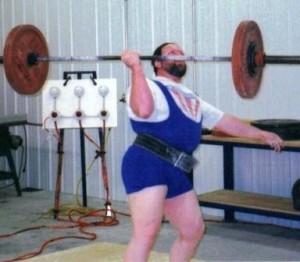
Bob Burtzloff setting the Best One Arm Clean and Jerk Record in the USAWA. This was done at the 2004 Dino Gym Challenge with a lift of 175 pounds.
Now, one final word of advice. I know when I was a kid, I did some one arm cleans. I was taught, to pull high and then use the free arm to help rack the bar. In other words, you ended up in a position at the finish where it looked like you had done a two hand Clean, but the bar had popped free of one hand. This is NOT ALLOWED in the rules. The first time I thought of attempting this lift I did not read the rules carefully and this impacted my lifting considerably. Not only did I not lift what I had planned, but I was not prepared to lift in any other way. So learn it, practice it and we’ll see you in VEGAS!!!!!
